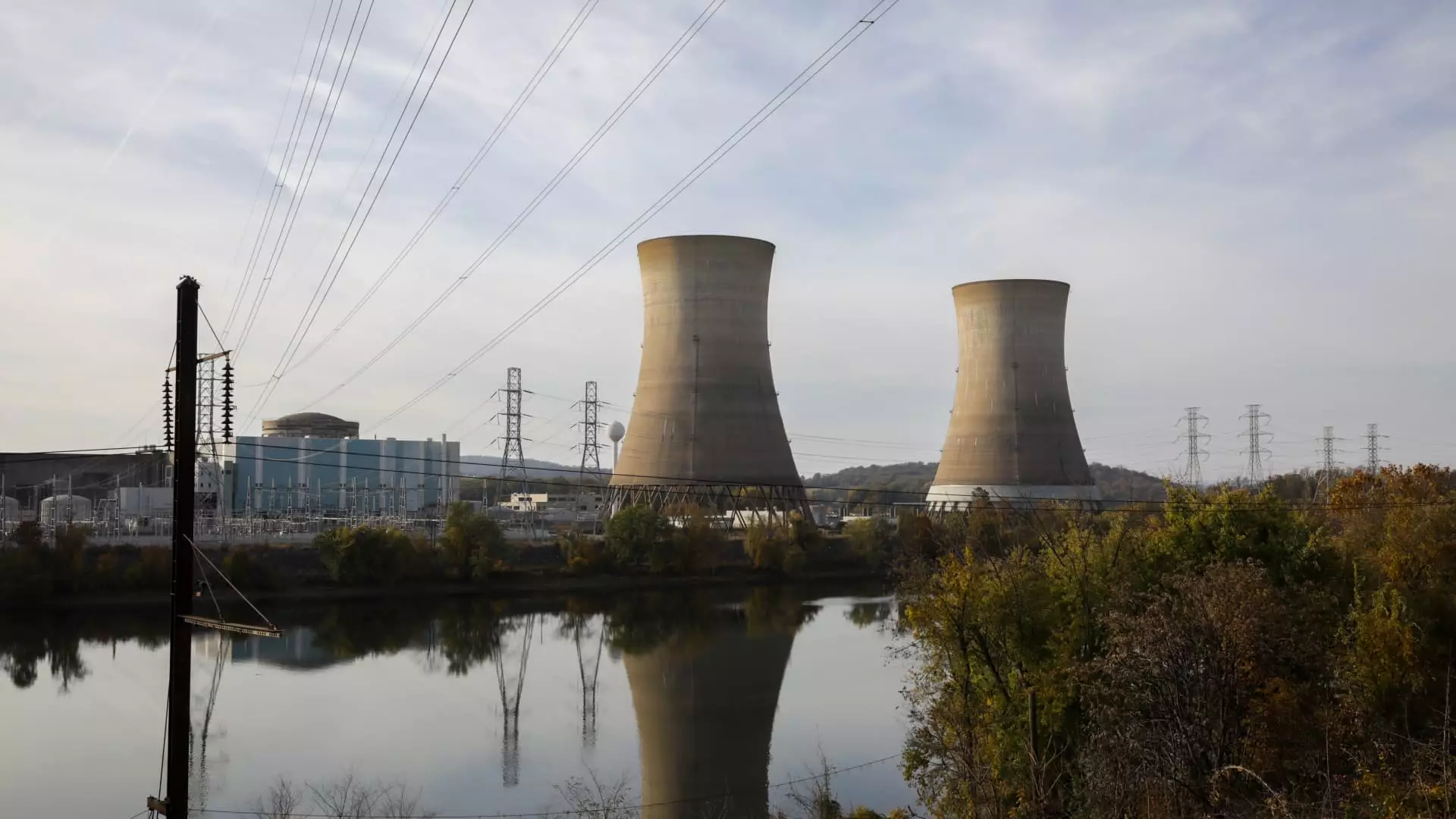In recent weeks, the intersection of the technology sector and energy consumption has been brought to the forefront. With the debut of China’s DeepSeek AI laboratory, doubts have emerged regarding the extent of energy consumption attributed to artificial intelligence applications. Notably, market reactions reflected these uncertainties, with significant drops in the stocks of major power companies highly reliant on the tech sector, including Constellation Energy, Vistra, GE Vernova, and Talen Energy.
On a Monday marked by stark declines, energy companies that had previously been seen as beneficiaries of increased energy demand from AI data centers experienced drastic stock prices drops—Constellation Energy and Vistra saw reductions exceeding 16%, while GE Vernova fell nearly 18%. Such declines represent a stark contrast to the bullish sentiment earlier in the year, when these firms led the S&P 500 on expectations of a booming energy demand driven by burgeoning AI data centers. However, the narrative rapidly shifted as investor concerns regarding rising competition from China’s AI sector intensified.
DeepSeek’s entrance into the competitive AI landscape has raised eyebrows among investors and market analysts alike. Following its groundbreaking AI model’s release on Christmas Day, DeepSeek presented a reasoning model, DeepSeek-R1, that directly challenges existing technologies such as OpenAI’s offerings. This rapid evolution of technology from a relatively new player highlights both the unpredictable nature of AI advancements and the tight-knit relationship between technological innovation and energy consumption forecasts.
Despite the optimism surrounding AI technologies, analysts from Bank of America expressed skepticism in a Monday note, declaring that DeepSeek not only represents a significant leap in AI capabilities but also poses a challenge to the previously unquestioned dominance of U.S.-based AI entities. Such developments raise important questions about future cloud capital expenditure, expected growth in chip manufacturing, and essential power requirements to sustain these advanced data-driven applications.
The inherently unpredictable demand for electricity from data centers has led major tech firms to explore nuclear power as a potential solution. Constellation Energy’s power agreement with Microsoft exemplifies this shift towards more stable, carbon-free energy sources, specifically with plans to restart the contentious Three Mile Island nuclear facility. Similarly, Talen Energy is supplying power to an Amazon data center from its nearby nuclear operations. This reliance on nuclear energy highlights a crucial pivot within the tech industry as they seek reliable power sources amidst uncertain consumption forecasts.
Despite the shift towards nuclear energy, challenges remain. Analysts point out that electrical grids in both Europe and the U.S. have suffered from chronic under-investment. This inadequacy represents a critical bottleneck that could hamper the capacity to meet the anticipated load growth driven by both the AI sector and energy demands overall. As Bank of America analysts have remarked, the underlying infrastructure must urgently adapt to the rapid changes in energy consumption patterns expected from AI advancements.
Power companies, particularly those heavily invested in natural gas and electric infrastructures, appear to be navigating a precarious landscape amid these shifts. GE Vernova, for instance, has witnessed a surge in market confidence this year, attributing its success to projections surrounding rising AI-induced energy needs. However, as competition intensifies and the landscape transforms rapidly, the company—and its peers—must remain vigilant and adaptive.
As the lines between technology and energy continue to blur, the power sector faces an uncertain trajectory. Though AI’s appetite for energy was initially projected to fuel significant demand, the emergence of disruptive competitors such as DeepSeek from China has instigated a reevaluation of expectations. Power companies not only must contend with evolving technological landscapes but also grapple with persistent infrastructure challenges that threaten to undermine their growth opportunities.
In this complex energy ecosystem, companies must adopt flexible strategies to respond to both market shocks and shifting consumption patterns. The race for supremacy in the AI arena is not only a question of technological prowess but also one of energy capability, underscoring the importance of a cohesive approach to energy production and innovation in a world where competition knows no borders.

